Norway in exile
The goal of Norway in exile was to liberate Norway from the German occupation force.
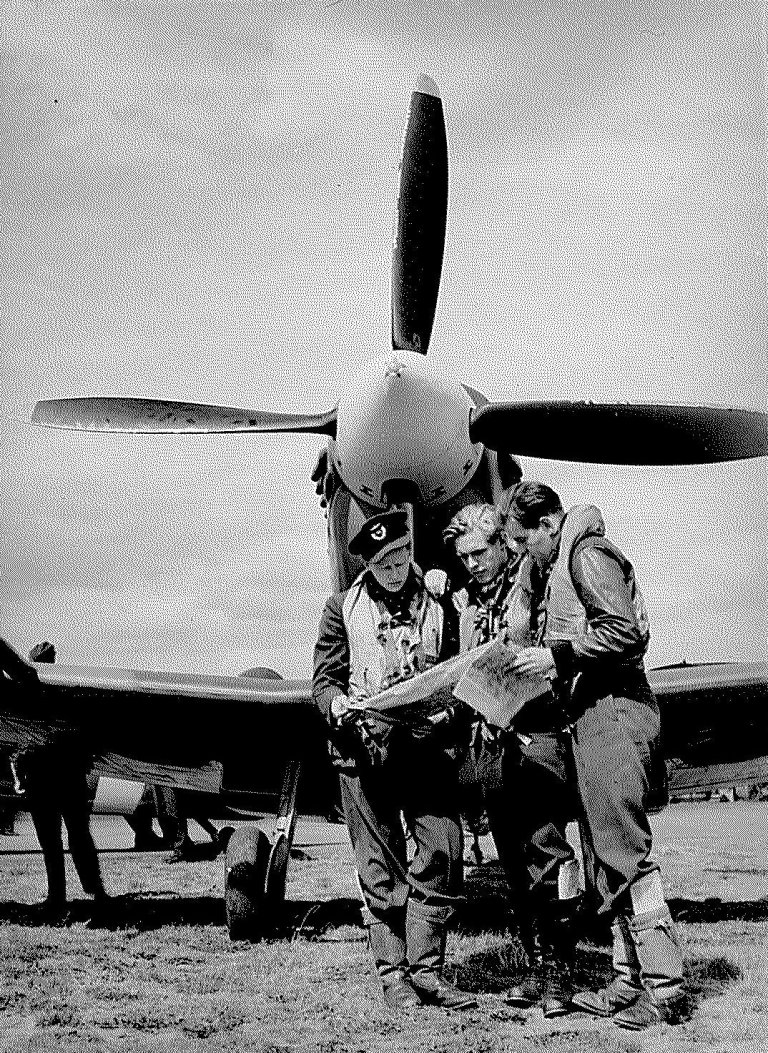
The Norwegian exile government established itself in London. In Sweden the exile organs grew to an extensive administrative body that handled the stream of refugees, did intelligence work and educated personnel for military service. The work of the air force was organized with a training unit in Canada and a combat unit in Great Britain. The navy was fully mobilized at the invasion April 9 1940. Nortraship administrated the big Norwegian merchant fleet outside German-controlled areas. The main offices were in London and New York.
After the German attack on Norway April 9 1940, approximately 50.000 refugees came from Norway to Sweden during the war. The Norwegian authorities had to handle a whole society of refugees, and this became the responsibility of the Norwegian legation and the Refugee Office in Stockholm.
Refugee issues became a main area of work for the legation. The Refugee Office was to relieve the economic and social needs of the refugees. The office was established April 28 1940. As part of the Legation, it was formally under the Ministry of Foreign Affairs, but administrative under the Ministry of Health and Social Affairs. In 1941, a reception center was established for refugees in Öreryd in Småland. The following year the centre was moved to Kjesäter in Södermanland. In the summer of 1943 a reception centre for Sami refugees in Jokkmokk in Norrbotten. The camp was lead by the Swedish until the autumn of 1944, when it became part of the Norwegian exile administration in Sweden.
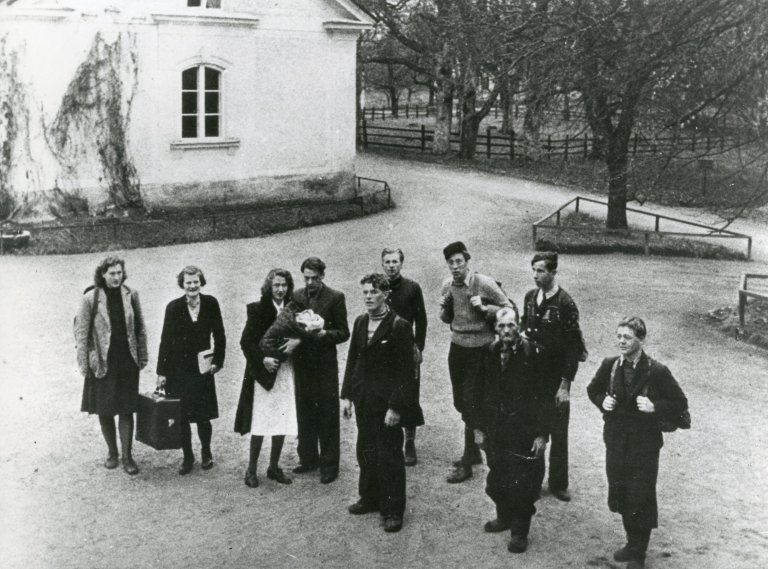
A central part of the archive is the Kjesäterkartoteket (index file). This is organized chronologically by refugee number with an alphabetic index. The examinations of refugees are shown in different reports that describe the refugee’s identities, information about the resistance and traitors. Otherwise there is a lot of health information in the archive, with patient journals, health records, dentist records, etc.
You can find material about the war years in the Legation/Embassy in Stockholm’s archive as well, including a register of prepared and renewed Norwegian passports, and questioning reports in chronological order by refugee number.
For the sake of Swedish authorities, there had to be something “covert” about the Norwegian refugee administration. Reserve police and police troops were terms used to disguise that they really were military personnel.
In 1942 the Police Office was reorganized under a new name: The Legal Office (Rettskontoret). The reason was the need for increased control with the refugees. It included security service, surveillance and counter-intelligence. Another motivation for the name change was to prevent the refugees feeling that they were under “police investigation”.
The Legal Office’s archive contains in- and outgoing correspondence from the Passport Office’s legal department, registering of Norwegian refugees, applications for passports, visa and entry permits to Norway.
To relieve the situation for refugees in Sweden and the needy in Norway, the Norwegian Relief-Central in Sweden was established in 1940. In 1944 the central was incorporated in the Health Director’s Office in Sweden, but right up until the end of the war it created its own archive. It consists of journals of registers and an administrative archive. The latter archive documents the help that was given in the form of medicines, gifts and fund raising. Certain cases deal with help for Norwegian children. Many of them didn’t receive sufficient nutrition, and clothing and shoes could be in poor condition. Some children were transferred to Sweden.
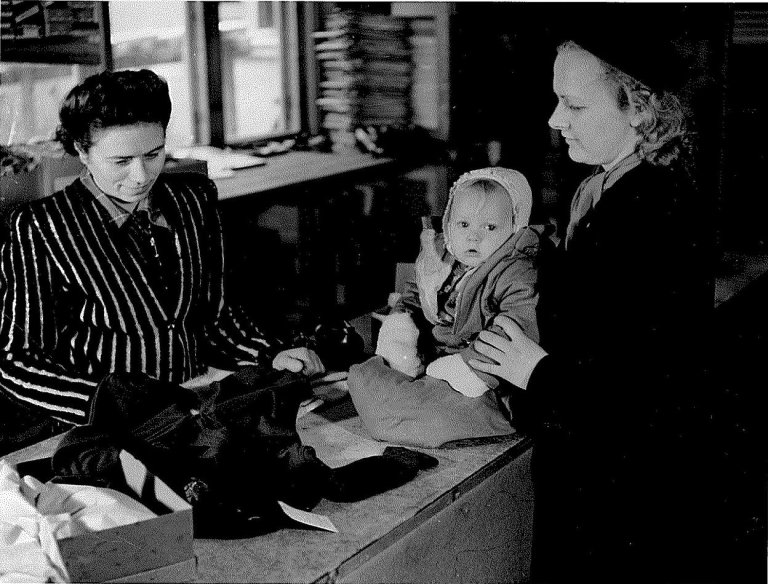
In the Public Health Directorate’s archive from London you can find documentation regarding the refugee administration in Sweden. The administrative archive is ordered according to themes, such as nutrition, doctors, dentists, and the treatment and vaccination of refugees.
The archive of the General Consulate in Stockholm has a limited amount of material about the war. The administrative archive consists mainly of material related to marriage, divorce, child support issues, inheritance settlements, etc.
Relevant archives in Arkivportalen
- S-2080 Sosialdepartementet, Flyktningskontoret i Stockholm (including Kjesäterkartoteket)
- S-1725 Utenriksstasjonene, Legasjonen/ Ambassaden i Stockholm, series Da, no. 391-450
- S-4815 Legasjonen i Stockholm, Rettskontoret
- S-1409 Handelsdepartementet, Skipsfartsavdelingen/Da/151-152
- S-2073 Den norske Relief-Central i Sverige
- S-3551 Utenriksstasjonene, Generalkonsulatet i Stockholm, Sverige
- S-2910 Sosialdepartementet 1940-1945, Medisinaldirektøren i London
The military offices organized personnel for military actions. Training camps were established, and as a cover-up the military departments were called “reserve police troops”. These troops were to be mobilized at the liberation of Norway.
The military attaches in Stockholm covered all three branches of the armed forces, and were the top authority for the military forces in Sweden. The archive contains information about the Reserve Police, also called the Police Troops. This force was built up for military operations at the liberation of Norway.

As a tactical move, the training camps for the Reserve Police were called ”health farms”. The organizing of these camps started in the fall of 1943, where Norwegian men of conscription age (18-45) were mobilized. However, the service was based on voluntariness. At the liberation of Norway the Reserve Police numbered 15 000 men.
The Reserve Police's archive follows the department structure of the Reserve Police. There is also a batallion section. Altogether there were nine batallions and one support batallion.
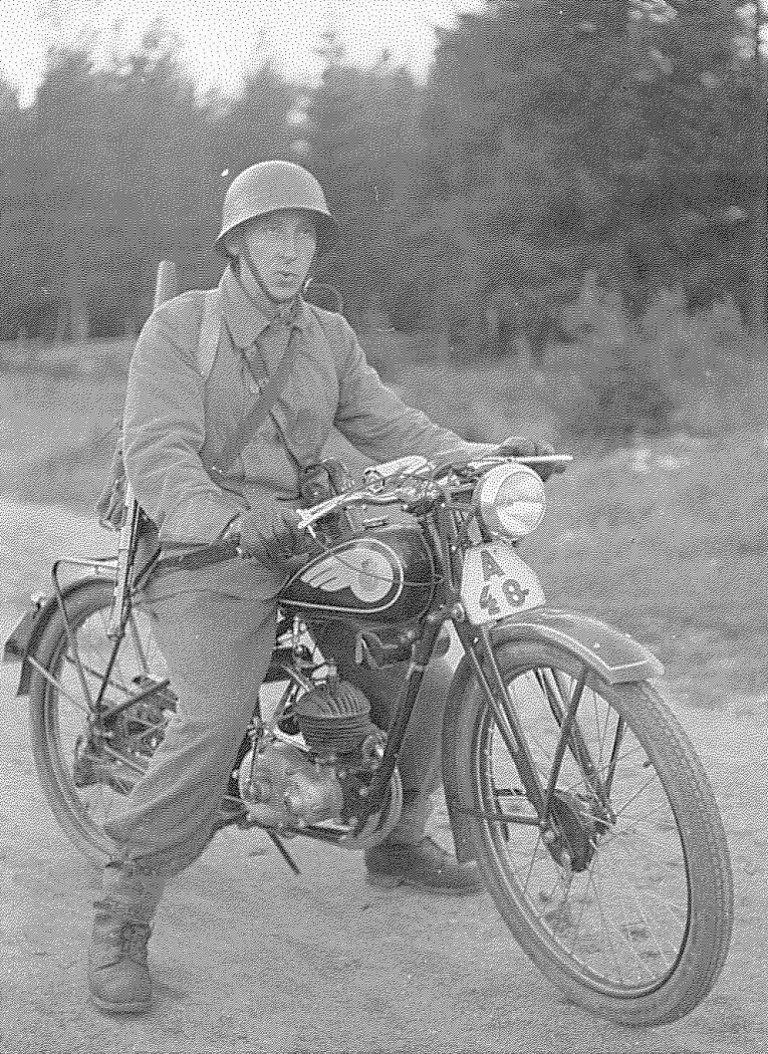
The military attaches in Stockholm were established by the exile government in April 1940. Altogether there were three attaches: the Military Attache, the Navy Attache and the Air Force Attache. Within the legation these were named as the Military Department or the Military Offices.
In the archive material from the Military Attaches you can find journals, copies of outgoing letters and an administrative archive. In the latter there are lots of documents, such as military representatitves at camp Kjeseter, personnel papers, police courses, promotions for officers in the Reserve - and Order Police, different conditions in the camps and various reports.
A part of the Legation’s work was about intelligence. This was partly related to refugees, and information about the situation in Norway. The information was important for the military action that was to be taken at the liberation of Norway.
In 1941 the Police Office was established. The Office was to take care of surveillance, security and counter-intelligence at the Legation. The following year, the office was reorganized under a new name: The Legal Office (Rettskontoret). The reason was the need for increased control with the refugees. The office was also to control employment, observation of oppositional refugee groups (communists) in addition to preparations for the treason settlement after the war. First the office was under the Military Attaché, but was soon organized under the Justice Department in London. In 1943 the Legal Office was divided into several sub-departments that administrated different fields, such as surveillance and refugee issues.
The Legal Office’s archive contains in- and outgoing correspondence from the Passport Office’s legal department, registering of Norwegian refugees, applications for passports, visa and entry permits to Norway.
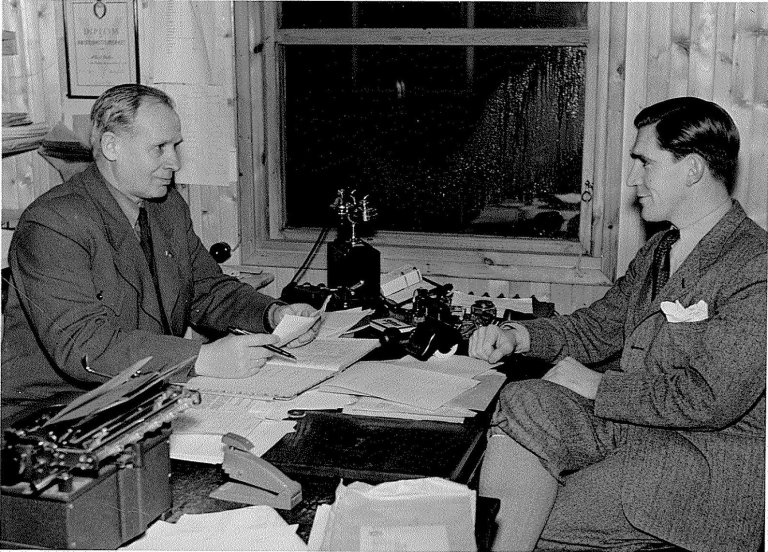
The Department of Defence’s Intelligence Service (FD/E) was a link to the British Intelligence Service. FD/E was to gather information about the conditions in Norway, and collaborate with the secret organizations which were under construction. In the archive there is more information about Stockholm with annual reports, personnel, etc.
In the archive from the Military Attaches in Stockholm you will find intelligence reports. You will also find this in the archive from the National Police, who otherwise has an extensive amount of material, some of this regarding investigation of suspected “un-nationals”. The National Police consisted of 1500 men. School and quarters were in Gottröra. The police troops participated in the liberation of Finnmark in October 1944.
Relevant archives in Arkivportalen
The Norwegian air force in exile was organized with a training unit in Canada and combat units in Great Britain. Norwegian pilots fled the country and reported for duty. A story of such a flight, the so-called long route via Asia and Africa, is described in the diaries of Kjell Løchen.

The air force training camp was officially opened November 10th 1940. The camp was called ”Little Norway” and was placed in the outskirts of Toronto, Ontario. The camp had a crew of approximately 300 men, divided between the Army’s air force and the Navy’s air force. In 1941 these were placed under joint command. The task was to recruit and educate air and ground personnel. After completed training and education in Canada, the Norwegian pilots were transferred to Great Britain for active service in the squadrons.
In May 1941, a holiday and recreational estate for the air force personnel was purchased. It was also placed in Ontario, about 160 kilometers from Toronto, and was of substantial size. After restoring an old timber building, and building of a new one, the estate could house 150 men. It was officially opened by crown princess Märtha 18 January 1942 and was given the name Vesle Skaugum (Little Skaugum).
The archive from the air force’s training camp contains thorough documentation of the activities in the camp. This includes the Expedition Office, the Press Office, the camp commanding officer, the Training Department and Norwegian Training Base.
In the summer of 1940, Lieutenant Commander Hjalmar Riiser-Larsen was appointed leader of the Navy’s air force, and Bjarne Øen for the Army’s air force in Canada. Major Ole Reistad became in charge of the training centre ”Little Norway” in Toronto. The Air Force joint command was established in March 1941 with Hjalmar Riiser-Larsen as the leader. Reistad’s archive includes correspondence, orders, accounts and newspaper clippings from the war years. Øen’s archive contains material on the establishment of the air forces during the war, and photos from the pilot’s lives in Great Britain.

The combat units in Great Britain were organized as squadrons. These were organized under the RAF, and were operational parts of this. Squadron 330 (the first squadron) was established in 1941 with a base on Iceland. Then followed squadron 332 and squadron 333, which were localized at Woodhaven in Scotland. From 333, squadron 334 was separated for missions to Norway and Stockholm. Except from squadron 333, the administrative archives of the other squadrons are for the time being not available for search in the directory. Neither is the archive of the Department of Defense in London.
In the archive of squadron 333 there are several reports from air raides. The following is quoted from a report after Mosquito F7333’s ship reconnoitering trip between Kvitsøy and Lista on May 8 1944 when it came into battle with a German airplane:
”The Mosquito opened fire immediately, and the enemy airplane did the same. The crew members observed several hits in both wings, but they were also hit themselves. The front glass had a direct hit, which made it completely frozen so that the pilot couldn’t see. A direct hit also destroyed the instrument panel, and pilot officer Jensen had several splints in his body (…) Despite the fact that the pilot was badly injured and didn’t have any instruments to guide him, and at the same time couldn’t see through the broken front window, he managed to bring his plane safely back to the home station and landed there. He was immediately taken to the hospital where the doctor removed grenade splints from his chest and a glass splint from his right eye.”
In the 333 squadron’s other material you can find letters, authorization books, order books for flying, logbooks for airplanes and crew, administrative archive and watch journals. Several reports from reconnoitering trips describe battles with enemy airplanes and attacks on submarines. Some reports contain photos from the air raides.
In total 334 Norwegian pilots were killed during the war. In the Armed Forces Military History Department you will find documentation of the air force’s casualties 1940-45. In the Legation in Bern’s archive there is correspondence about missing Norwegian pilots in series D, box 63.
Relevant archives in Arkivportalen
- PA-1455 Kjell Løchen
- RAFA-3540 Forsvaret, Militært person- og organisasjonsarkiv, Ole Imerslun Reistad
- RAFA-4991 Forsvaret, Militært person- og organisasjonsarkiv, Bjarne Øen
- RAFA-2003 Forsvaret, 333 skvadron
- RAFA-3882 Forsvaret, FKA - Luftforsvarets falne 1940-1945
- RAFA-3974 Forsvaret, Flyvåpnenes treningsleir
- RAFA-1997 Flyvåpnenes felleskommando (casualty lists 1942-1945)
- S-2674 Utenriksstasjonene, Legasjonen i Bern/D/63
The navy was fully mobilized at the German invasion 9 April 1940. In June, 15 navy ships and 600 men accompanied the King and the government to Great Britain. In the course of 1941 and 1942 the navy was reinforced with an increase in personnel and an extension of the battle fleet.
But not everybody arrived safely to shore. In the encounters that followed after the invasion, the ironclad ships ”Eidsvold” and ”Norge” were sunk with many casualties.
In Great Britain several navy units were established: in Port Edgar, Edinburgh, Devonport and Scalloway, among other places. In 1941, the Navy’s shooter unit for the merchant fleet (SSH) was established. It was localized in Dumbarton and was responsible for educating navy personnel who were placed as shooters on merchant vessels. In total 2240 men were educated for this service during the war.
Multiple operations took place along the Norwegian coast. The Norwegian Naval independent Unit, also called ”the Shetland buses”, carried weapons, equipment and refugees. During the war, the navy got several vessels from British authorities, including five destroyers. The motor torpedo boats were particularly suitable for attacking German ships along the Norwegian coast.
Approximately 30 whale ships were converted to escorting- and minesweeper vessels. Minesweepers operated in the Persian Gulf, Suez and the Mediterranean. Mine ships operated in the British canal, and placed mines outside the French coast.
The battle of the Atlantic Sea resulted in many casualties, not least in 1942 when many ships were lost, most of them because of submarine attacks. The turnaround for the allied forces came in 1943, when the Germans were in retreat in the Atlantic war.
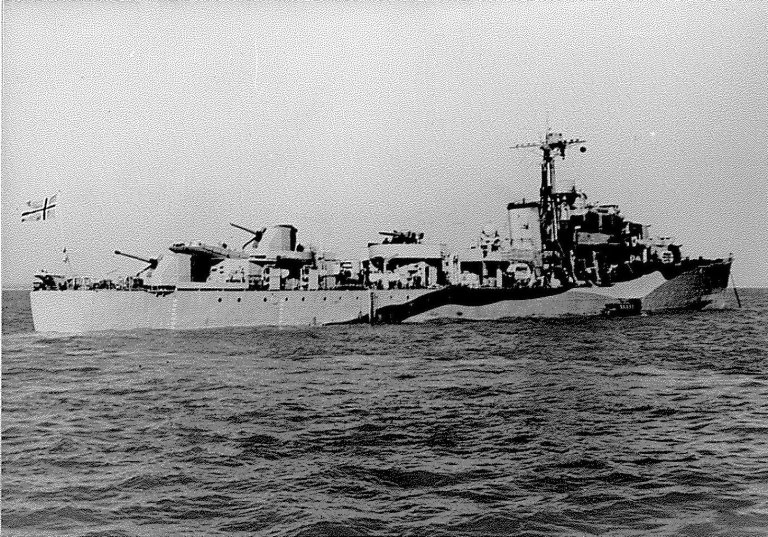
Throughout the war years the navy suffered great losses. 650 lost their lives in the exile period, in addition to the 300 who fell during the battles in Norway in 1940. That means that every sixth person in active navy service lost their lives. Mines and air plane bombing were constant threats. The maritime personnel were exposed to great stress. Harsh weather conditions, little sleep and a constant threat of enemy attacks left traces. Many had mental problems after the war.

The most extensive documentation of the Navy during the war years, you will find in the archive of the Naval Command with subdivisions. Apart from copies of outgoing letters and journals, there is an administrative archive that includes circulars and intelligence reports. Further there are documents that deal with prisoners of war, loss due to war risk, war production plans, decorations, officers, privates, raid reports (vessels), personnel, economy, jurisdiction and coordination.
Relevant archives in Arkivportalen
- RAFA-2035 Forsvaret, Sjøforsvarets overkommando med underavdelinger
- RAFA-1992 Forsvaret, Marineavsnitt Kirkenes
- RAFA-4409 Forsvaret, Distriktsforvaltningskontoret, Horten
- RAFA-1905 Forsvaret, Marinens artilleri
- RAFA-1907 Forsvaret, Sjømilitære korps, Håndverkskorpset og Minekorpset
- RAFA-2039 Forsvaret, Sjøforsvarets / Marinens minevesen
- RAFA-2307 Forsvaret, Marinens overkommando